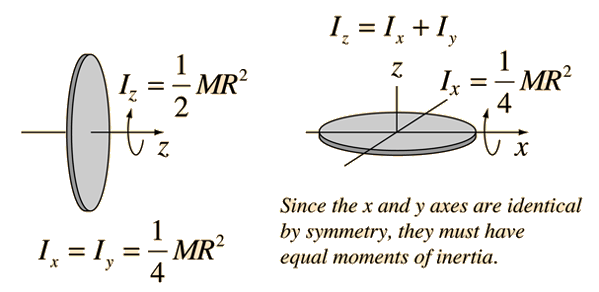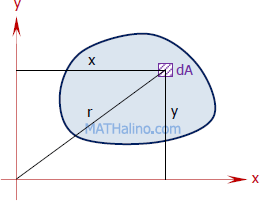
Let’s have an example to illustrate this point.įor instance, let’s assume that the resistance to change or the amount of inertia is quite low in a wheel with a central axis. When used in an equation, the moment of inertia is usually given the simple “I” or “IP.”īut how difficult would it be to rotate a given object or to move the object in a circular pattern relative to a given pivot point? The answer to this question would depend on the object’s shape and the concentration of the object’s mass. Symbolically, this unit of measurement is kg-m2. The International System of Units or “SI unit” of the moment of inertia is 1 kilogram per meter-squared. The calculation for the moment of inertia tells you how much force you need to speed up, slow down or even stop the rotation of a given object. This works the same way as to how mass would represent an object’s resistance to a change in its velocity when it’s not rotating. This means that a single object may have varying values for the moment of inertia depending on the orientation of its axis and its location.Ĭonceptually speaking, you can think of the moment of inertia as a representation of a given object’s resistance to change in angular velocity. It’s possible to calculate this measurement based on the distribution of mass within the given object along with the position of the object’s axis. Therefore, this measures the difficulty of changing the rotational speed of the object. The moment of inertia of an object refers to a calculated measure for any given rigid body that’s rotating around a fixed axis. You can find the moment of inertia of an object using this area moment of inertia calculator. What is the moment of inertia of an object? Therefore, you may think of the moment of inertia of a body as the body’s ability to resist torque or force that’s twisting.

When it comes to Newtonian physics, the moment of inertia refers to the acceleration of a body which has an inverse proportion to its mass.Īlso, in Newtonian rotational physics, the angular acceleration of a body has an inverse proportion to the body’s moment of inertia.

The moment of inertia is usually assigned the symbol “I.” As aforementioned, this refers to the rotational angle of an object’s mass.

You can find the value for the moment of inertia by hand or you can use a moment of inertia calculator. This value is equal to the product of the object’s mass and the square of the object’s perpendicular distance from its rotational axis. In simpler terms, the moment of inertia refers to the resistance of a rotating body to angular deceleration or acceleration. This is also known as “angular mass” and it refers to a rotating body’s inertia with respect to its rotation. Moment of inertia is a commonly used concept in physics.


 0 kommentar(er)
0 kommentar(er)
